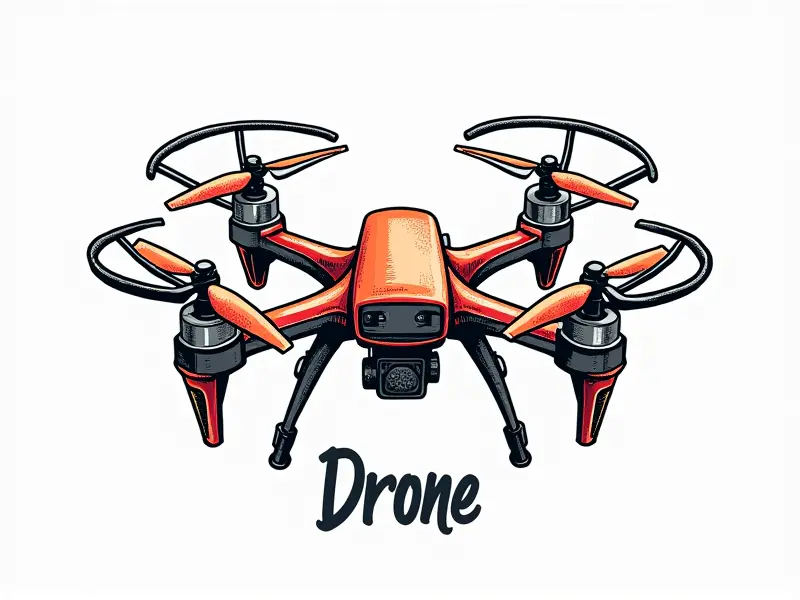Brushless motor noise issues

Brushless Motor Noise Issues: Silent Flight and Optimal Performance
When it comes to drones or remote-controlled (RC) vehicles, the noise generated by brushless motors can be a significant issue. Not only does excessive noise detract from the overall experience, but it can also impact performance in various ways, especially in competitive settings such as FPV racing. This article delves into the common causes of brushless motor noise and provides practical tips to minimize buzzing, humming, and vibration for quieter operation.
Silent Flight: Taming Brushless Motor Noise
Taming the noise produced by brushless motors in drones is crucial for achieving silent flight. The primary sources of this noise include electrical interference, mechanical wear, and improper installation or configuration. By addressing these issues effectively, you can significantly reduce motor noise.
Quieting Your Drone: Tips for Less Noise
To quiet your drone and achieve less noisy operation:
- Upgrade Components: Use high-quality ESCs (Electronic Speed Controllers) and motors that are specifically designed to minimize noise.
- Tighten Mounting Screws: Ensure all mounting screws for the motor and propellers are securely tightened to reduce vibration.
- Balanced Propellers: Use balanced propellers to ensure smooth rotation, which can greatly reduce buzzing and humming sounds.
Common Causes of Brushless Motor Buzzing
The most common cause of brushless motor buzzing is unbalanced or misaligned components. Other factors include:
- Mechanical Wear: Worn-out bearings can lead to increased noise and reduced performance.
- Electrical Interference: Poor wiring connections or electromagnetic interference from other electronic components can cause buzzing.
Minimizing Vibration in Brushless Motor Systems
Vibration is a major contributor to motor noise. To minimize vibration, consider the following strategies:
- Use Dampening Materials: Apply rubber or silicone dampeners between the frame and motors.
- Balanced Weight Distribution: Ensure that your drone's weight is evenly distributed to reduce overall vibration.
Understanding and Solving Brushless Motor Humming
Humming in brushless motor systems can be caused by electrical issues such as voltage fluctuations or loose connections. Here’s how you can address these problems:
- Check Connections: Inspect all wiring for any signs of wear, and ensure that connectors are securely fastened.
- Maintain Voltage Stability: Use high-capacity batteries to maintain consistent power delivery to the motors.
The Impact of Noise on FPV Racing Performance
Noise can significantly affect your performance in FPV (First-Person View) racing. Excessive noise can distract pilots and impair situational awareness, leading to reduced agility and control during races.
Fixing Noisy Brushless Motors in RC Drones
To fix noisy brushless motors:
- Inspect Components: Regularly inspect all motor components for wear or damage.
- Adjust Propeller Pitch: Adjust the pitch of your propellers to find a balance between performance and noise reduction.
Tips for Minimizing Brushless Motor Sound
In addition to the above tips, here are some general recommendations:
- Use Quieter Propellers: Select propellers designed specifically to reduce noise while maintaining performance.
- Maintain Proper Lubrication: Ensure that all moving parts are well-lubricated, which can help in reducing friction and noise.
Silent Operation: Solutions for Brushless Motor Noise
To achieve silent operation, consider these solutions:
- Custom Mounts: Design custom mounts that provide better isolation from the frame.
- Vibration Dampening Gels: Apply vibration dampening gels between motor and propeller to reduce noise.
Brushless Motors: Why They Whine and How to Fix It
The whining sound from brushless motors is often due to electromagnetic interference or mechanical issues. To fix it:
- Optimize Electrical Configuration: Ensure that all electrical components are properly shielded to minimize noise.
- Mechanical Adjustments: Make necessary adjustments such as tightening screws and realigning parts to reduce mechanical noise.
Minimizing Brushless Motor Hum for FPV Racing
To specifically address brushless motor hum in FPV racing:
- Select High-Quality Components: Use high-quality motors and ESCs designed to operate silently.
- Regular Maintenance: Regularly maintain your drone’s components to ensure they are operating at their best.
Conclusion
The noise generated by brushless motors can be a significant issue for drone and RC enthusiasts, impacting both performance and user experience. By understanding the common causes of motor noise and implementing strategies such as upgrading components, balancing propellers, and using dampening materials, you can significantly reduce buzzing and humming sounds. Additionally, maintaining proper electrical configuration and mechanical adjustments will help ensure silent operation and optimal performance in FPV racing.

